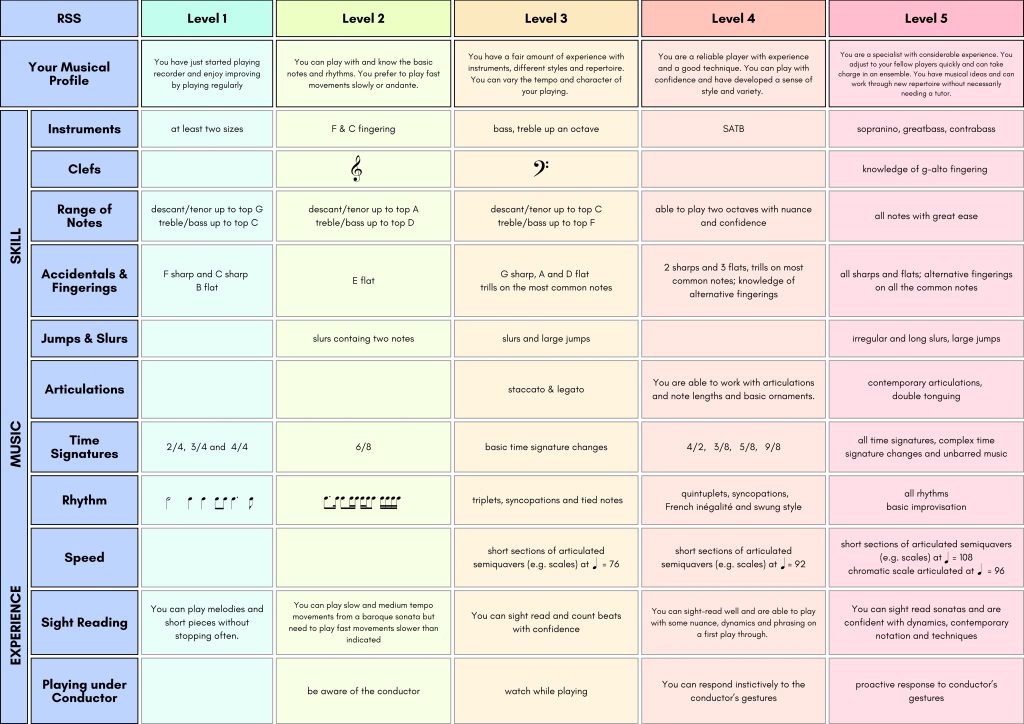With so many people coming to RSS it is important that we grade the sessions by playing level so that everyone can enjoy the best experience possible. We have 5 different playing levels which are described below.
Please read the descriptor for each level and work out which one suits you best. Your level for RSS will be the one where you can tick all the requirements for that level and the levels before, especially those referring to speed of playing. For example, if you tick all the requirements for Levels 1,2 & 3 and half of those for Level 4 then you should choose Level 3. Of course, as always, you may change groups once on the course if you and/or the tutor feel you are misplaced.
These are the updated Playing Level Descriptors. You can click the picture to zoom in and can also download the document in PDF by clicking here.

New in 2025 is the opportunity to asses you playing level with the help of a piece of music. You can find information about the Level Piece in the top menu.
